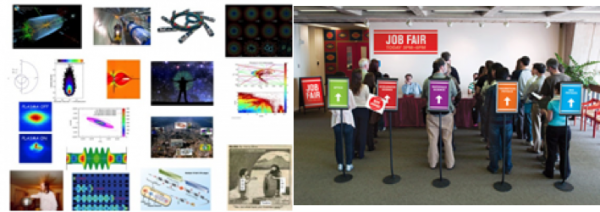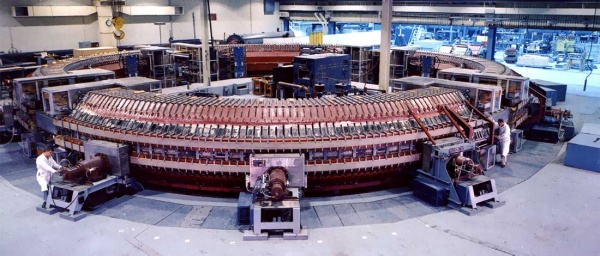Difference between revisions of "Ernest courant traineeship main"
YichaoJing (Talk | contribs) (→Ernest Courant Traineeship in Accelerator Science & Engineering) |
YichaoJing (Talk | contribs) |
||
| Line 10: | Line 10: | ||
== '''Why Particle Accelerators?''' == | == '''Why Particle Accelerators?''' == | ||
| + | |||
| + | [[Image:Cosmotron.jpg|600px|Image: 1200 pixels|center]] | ||
Particle accelerators are a futuristic technology that has many uses including for science, engineering, medicine and industrial applications. There are about 30,000 accelerators of all sizes in the world. Finding trained people who can understand, operate and engineer such systems is a problem. What is a particle accelerator? It is a circular or straight (linear) tube containing a vacuum in which atomic particles (i.e. electrons, protons or ions) can be accelerated to high speed using electric and/or magnetic fields. Research accelerators can be measured in miles. Many other accelerators are much smaller. What can the particle accelerators be used for? Some applications include: | Particle accelerators are a futuristic technology that has many uses including for science, engineering, medicine and industrial applications. There are about 30,000 accelerators of all sizes in the world. Finding trained people who can understand, operate and engineer such systems is a problem. What is a particle accelerator? It is a circular or straight (linear) tube containing a vacuum in which atomic particles (i.e. electrons, protons or ions) can be accelerated to high speed using electric and/or magnetic fields. Research accelerators can be measured in miles. Many other accelerators are much smaller. What can the particle accelerators be used for? Some applications include: | ||
[[EC_traineeship_accelerator|'''Read more''']] | [[EC_traineeship_accelerator|'''Read more''']] | ||
Revision as of 15:46, 31 August 2021
Ernest Courant Traineeship in Accelerator Science & Engineering
Stony Brook University in collaboration with Brookhaven National Laboratory (BNL), Cornell University (CU) and FERMI National Accelerator Laboratory (FNAL) is establishing the Ernest Courant Traineeship in Accelerator Science & Engineering supported by a 5-year grant from the High Energy Office of the US Department of Energy. This novel program is named after eminent accelerator physicist, Ernest Courant, who lay the foundation of modern accelerator science. At SBU the traineeship is a part of the Center for Accelerator Physics and Education (CASE) – the http://case.physics.stonybrook.edu/index.php/Main_Page
The main goal of the program is to train scientists and engineers in the field of accelerator sciences with a focus in the four areas identified as the DOE Mission Critical Workforce Needs in Accelerator Science and Engineering: (a) Physics of large accelerators and systems engineering; (b) Superconducting radiofrequency accelerator physics and engineering; (c) Radiofrequency power system engineering and (d) Cryogenic systems engineering (especially liquid helium systems).
Why Particle Accelerators?
Particle accelerators are a futuristic technology that has many uses including for science, engineering, medicine and industrial applications. There are about 30,000 accelerators of all sizes in the world. Finding trained people who can understand, operate and engineer such systems is a problem. What is a particle accelerator? It is a circular or straight (linear) tube containing a vacuum in which atomic particles (i.e. electrons, protons or ions) can be accelerated to high speed using electric and/or magnetic fields. Research accelerators can be measured in miles. Many other accelerators are much smaller. What can the particle accelerators be used for? Some applications include:

